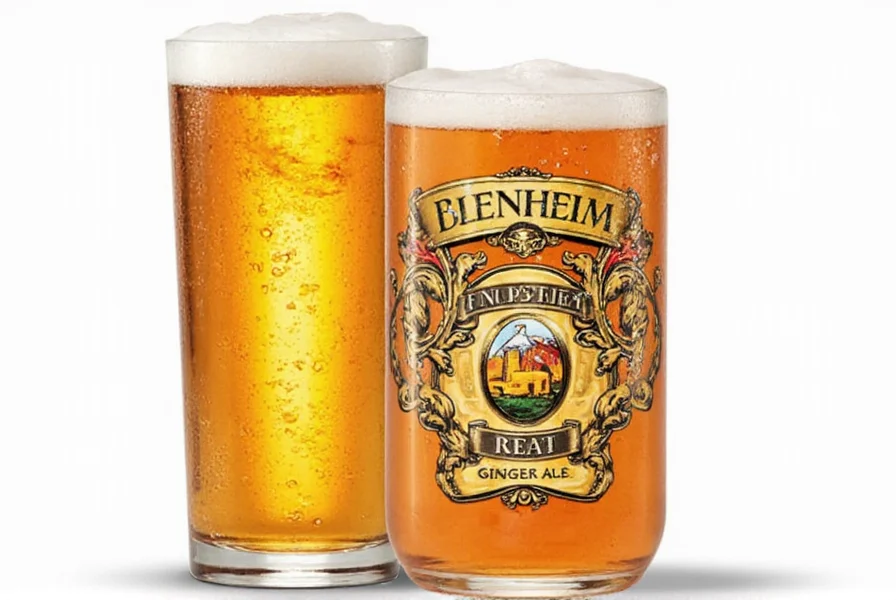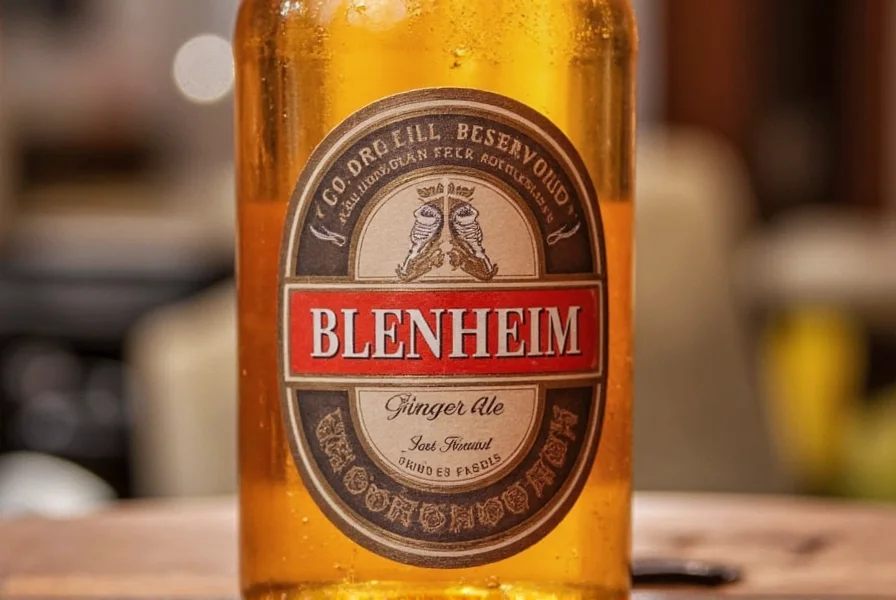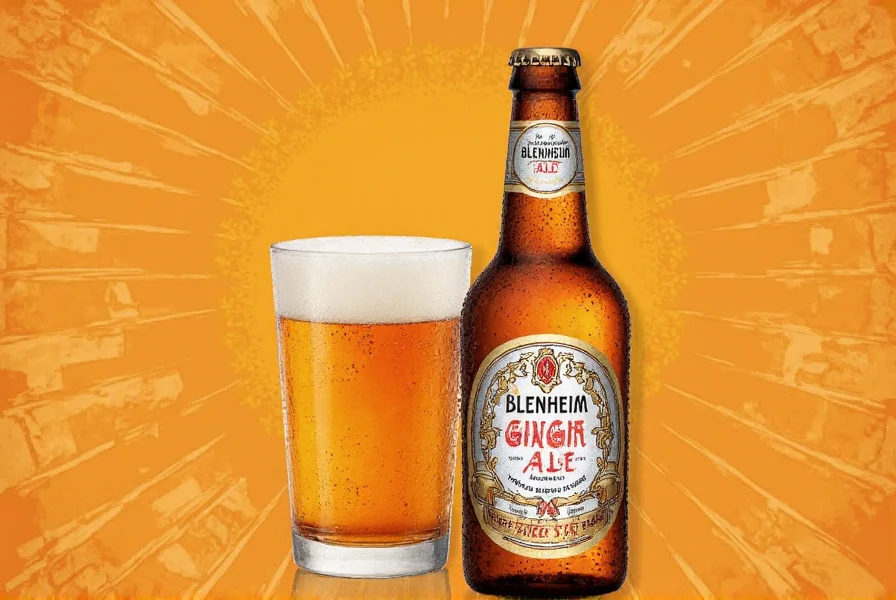Blenheim Ginger Ale stands apart in the crowded ginger beverage market as a true artisanal product with deep regional roots and a devoted following. This South Carolina-born beverage has maintained its original recipe and production methods for over a century, creating a ginger experience that's dramatically different from commercial alternatives.
The Rich History of Blenheim Ginger Ale
Originating in 1903 in the small town of Blenheim, South Carolina, this ginger ale began as a medicinal tonic created by Dr. C.R. May. The doctor developed the formula to help with digestive issues, using locally sourced ginger and pure cane sugar. The "Blenheim" name comes from the town where the original artesian well water was drawn—a water source still used in production today.
What makes Blenheim Ginger Ale history particularly fascinating is its near-disappearance and revival. After Dr. May's death, the recipe changed hands multiple times, nearly vanishing from the market in the 1980s. Fortunately, local enthusiasts rediscovered the original formula in the 1990s, reviving production while maintaining the authentic process that gives Blenheim its distinctive character.

What Makes Blenheim Ginger Ale Unique
The defining characteristic of Blenheim Ginger Ale is its remarkable heat level, which comes from using actual ginger root extract rather than artificial flavorings. While most commercial ginger ales use minimal ginger for subtle flavor, Blenheim embraces the root's natural spiciness.
| Variety | Heat Level | Best For |
|---|---|---|
| No. 1 | Mild | Beginners, ginger ale purists |
| No. 2 | Moderate | Daily drinking, lighter cocktails |
| No. 3 | Medium-Hot | Most popular, versatile cocktails |
| No. 4 | Hot | Spice enthusiasts, bold cocktails |
| No. 5 | Extra Hot | Extreme ginger lovers, limited use |
Blenheim No. 3 Ginger Ale represents the sweet spot in their product line—delivering noticeable heat without overwhelming the palate. This variety has become particularly popular among mixologists for its ability to add complexity to cocktails without requiring additional ginger components.
Flavor Profile and Sensory Experience
When you first open a bottle of Blenheim Ginger Ale, particularly the No. 3 variety, you'll immediately notice the pronounced aroma of fresh ginger. The initial taste delivers classic ginger ale sweetness from pure cane sugar, but this quickly gives way to a building warmth that peaks at the back of the throat.
Unlike mass-produced ginger ales that often taste primarily of carbonated water and sweetener, Blenheim offers a complex flavor journey. The genuine ginger root extract provides earthy notes alongside the expected spiciness, creating a multidimensional taste experience that evolves as you drink it.
Culinary and Mixology Applications
Blenheim Ginger Ale's distinctive profile makes it invaluable in both culinary and cocktail applications. Professional bartenders prize Blenheim No. 3 for crafting elevated versions of classic drinks like the Moscow Mule, Dark and Stormy, and Whiskey Ginger.
For home mixologists exploring blenheim ginger ale cocktail recipes, the No. 3 variety works particularly well with bourbon, dark rum, and aged tequila. Its heat cuts through the richness of these spirits while complementing their natural flavors. Try substituting Blenheim for standard ginger ale in any cocktail recipe for an instant upgrade in complexity.
Chefs also utilize Blenheim Ginger Ale in marinades, glazes, and reductions. The natural heat and ginger flavor enhance Asian-inspired dishes, barbecue sauces, and even some dessert applications where a spicy contrast is desired.

Understanding Blenheim's Regional Significance
While now available nationally, Blenheim Ginger Ale maintains strong ties to its South Carolina origins. The brand represents a successful example of regional craft beverage production that has gained national recognition without compromising its artisanal approach.
The continued use of the original artesian well water from Blenheim, South Carolina, contributes significantly to the product's distinctive taste profile. This water source, with its unique mineral composition, interacts with the ginger root extract to create flavors impossible to replicate elsewhere—a concept similar to terroir in wine production.
Where to Find Blenheim Ginger Ale
Finding Blenheim Ginger Ale has become easier as its popularity has grown, though it remains less ubiquitous than mainstream ginger ale brands. Most specialty liquor stores and craft beverage retailers now carry at least the No. 3 variety. Larger grocery chains with robust beverage selections may also stock it, typically in the craft soda or cocktail mixer section.
For those researching where to buy Blenheim Ginger Ale, online retailers provide reliable access regardless of geographic location. However, purchasing locally supports small businesses that curate distinctive beverage selections for their communities.
Preserving the Blenheim Tradition
What's remarkable about Blenheim Ginger Ale is how little the production process has changed since 1903. While most beverage companies have streamlined and industrialized their operations, Blenheim maintains small-batch production that prioritizes flavor over efficiency.
This commitment to tradition explains why enthusiasts seeking authentic blenheim ginger ale history appreciate the brand's resistance to corporate acquisition and formula modification. In an era of homogenized flavors, Blenheim offers a genuine taste of regional American craft beverage history.
What makes Blenheim Ginger Ale different from regular ginger ale?
Blenheim Ginger Ale uses real ginger root extract rather than artificial flavors, resulting in noticeable heat and complex flavor. Unlike mainstream ginger ales that are primarily sweet with minimal ginger presence, Blenheim offers varying heat levels (No. 1-5) with authentic spicy notes that build on the palate. It's made with cane sugar instead of high-fructose corn syrup and uses artesian well water from South Carolina.
Which Blenheim Ginger Ale variety is best for cocktails?
Blenheim No. 3 is widely considered the ideal variety for cocktails. It offers a balanced heat level that enhances drinks without overwhelming other ingredients. Professional bartenders prefer No. 3 for Moscow Mules, Dark and Stormys, and Whiskey Gingers because its medium-hot profile adds complexity while maintaining mixability. No. 2 works well for lighter cocktails, while No. 4 provides bolder ginger presence for those who prefer more spice.
Why is Blenheim Ginger Ale so spicy compared to other brands?
Blenheim Ginger Ale's spiciness comes from using actual ginger root extract rather than artificial ginger flavoring. Most commercial ginger ales contain minimal ginger to create a mild, sweet beverage. Blenheim embraces the natural heat of ginger, with varieties ranging from mild (No. 1) to extremely hot (No. 5). The No. 3 variety, their most popular, delivers noticeable warmth that builds in the throat, reflecting the authentic character of fresh ginger root.
Does Blenheim Ginger Ale contain alcohol?
No, Blenheim Ginger Ale is a non-alcoholic beverage. Like all ginger ales, it's a carbonated soft drink made from water, cane sugar, ginger root extract, and natural flavors. Despite its popularity as a cocktail mixer, Blenheim itself contains no alcohol and is suitable for all ages. Its distinctive heat comes solely from the ginger root extract used in production.
How should Blenheim Ginger Ale be stored for best quality?
Blenheim Ginger Ale should be stored upright in a cool, dark place away from direct sunlight and temperature fluctuations. Once opened, it should be refrigerated and consumed within 3-5 days for optimal flavor and carbonation. Unopened bottles maintain best quality for 9-12 months when stored properly. Unlike some craft beverages, Blenheim does not improve with age and is meant to be enjoyed fresh for its vibrant ginger character.











 浙公网安备
33010002000092号
浙公网安备
33010002000092号 浙B2-20120091-4
浙B2-20120091-4